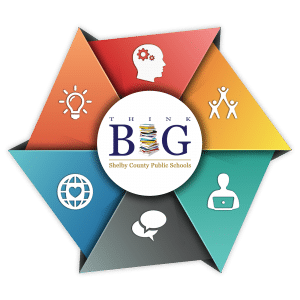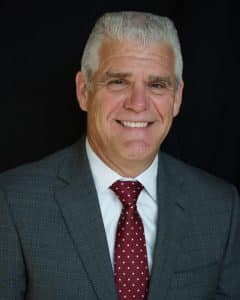The Learning Sciences: How the Brain Was Built to Learn
CompetencyWorks Blog
This is the first of two guest posts by James Neihof, the recent past superintendent of Shelby County Public Schools in Kentucky. The second post is here.
“We are trying to develop a culture of learning, not a culture of grading.”
– Ken O’Connor
 Mastery requires failure, repeated practice and repeated performance. On October 8, 1956, in Game 5 of the World Series, Yankee pitcher Don Larsen threw a perfect game against the Dodgers. He was known for his entire lifetime as the only pitcher to throw a perfect game in the World Series. At nearly 90 years of age, in one of his last interviews, he said he still thought about it multiple times every day.
Mastery requires failure, repeated practice and repeated performance. On October 8, 1956, in Game 5 of the World Series, Yankee pitcher Don Larsen threw a perfect game against the Dodgers. He was known for his entire lifetime as the only pitcher to throw a perfect game in the World Series. At nearly 90 years of age, in one of his last interviews, he said he still thought about it multiple times every day.
Larsen is one of thousands of examples. It seems the entire world agrees that mastery is what successful people should strive for. The truth is that Larsen’s entire career was a pursuit of mastery. For his attainment of mastery, he was revered by millions for a lifetime. In his own words, every day for the next 62 years he reflected on having achieved mastery.
Rules of Thumb in Mastery Learning – Teachers are learning that success with mastery learning isn’t accidental, but neither is it impossible. Deep learning requires teachers to plan the learning experience based on how the human brain works – the learning sciences. Teachers who are striving to create a competency-based education system in the Shelby County Public Schools leverage instructional approaches and systems of assessment all of which are based in the learning sciences and follow these common sense rules of thumb:
- Learning is an activity that is carried out by the learner. Deep down we teachers know from our own experiences that learning requires active engagement and effort from learners. The greatest successes occur when teachers start with tasks that learners value.
- Learning requires cognition, emotion, and motivation. Brain research is clear. The brain doesn’t separate cognitive from emotional functioning, so successful learning environments provide both. Teachers who know the role emotions play in learning design lessons to engage the learners’ emotions. Motivation is the most fluid of the three required factors. It grows as competence grows. That’s why Don Larsen worked so hard after the perfect game. He was motivated by success.
- Intrinsic motivation leads to better outcomes than extrinsic motivation. Extrinsic or controlled motivation (systems of reward or punishment like grades from 0 – 100 points) may be useful in the short run but often produce unintended results of disengagement or even resistance. Three things commonly increase intrinsic motivation:
- Experiencing competence – “Yes, I can do this.”
- Relatedness – “Oh, I see how I can use this.”
- Autonomy – “I control this process of learning.”
The Learning Sciences make a very powerful argument for Competency-based Education. These are three of ten Cornerstones. You can capture a summary of all ten by reading just two pages (page 55 and 56) of Quality Principles for Competency-based Education. We believe that CBE is common-sense education, and that success data will come as we apply the Learning Sciences.
A culture of learning is the driver for change – At a recent talk with a group of Shelby County Public School teachers, renowned educator Ken O’Connor talked about the changes over the last fifty years in what we know about how people learn. He explained how necessary it is that our pedagogy be aligned with the known research about how people learn – the Learning Sciences.
Listening to Ken, I thought of how his comments align beautifully with a quote from Darren Cook, a teacher at East Middle School in District 51, Colorado. (Darren’s quote can be found on page 56 of the Quality Principles book.) Darren said, “There are many who don’t realize that delivering grade-level curriculum day after day to kids regardless of whether they are learning or not is based on an archaic pedagogy. Many students are harmed by this – they end up thinking that they aren’t smart or give up on school. We know so much more about how students learn today, and our schools should be shaped around it. But if they (teachers) don’t know that they are doing something harmful, are they really responsible? Once you see personalized, performance-based learning in action, you face a moral question. Are you going to be like Thomas Jefferson who knew that slavery is wrong but kept doing it anyway? Or once you realize that there is a better way to help students learn, are you going to do it, even if you bump up against other parts of the system?”
Teachers in Shelby County Public Schools sound a lot like Darren these days. They realize and endorse the need for pedagogical change and are digging in to make the changes. At the same time, they understand the very real challenges of, as Darren puts it, “bumping up against other parts of the system.” It is at those times that we often need to remind ourselves of why the pedagogical shift to competency-based education is so important.
The Learning Sciences give us our WHY – Ken O’Connor reminds us of how important it is to continually remind teachers, parents, students, and community members why we are teaching, assessing and reporting for mastery. He encourages principals to lead boldly and to rely on what the Learning Sciences tell us about the process of learning. As the educational leaders, superintendents and principals should continually steer conversations to the learning sciences to help educators understand the reasons for the shift in pedagogy.
Our colleagues at CompetencyWorks who wrote the Quality Principles agree with Ken. Both say that when districts and schools consult the learning sciences, they find clear evidence that learning occurs when the learner drives and owns the learning process.
Teachers with an understanding of the Learning Sciences (The Nature of Learning: Using Research to Inspire Practice) think more strategically about how to design learning experiences around students’ zone of proximal development, activate prior knowledge, manage the limitations of working memory and the transfer to long-term memory. These teachers also find that intrinsically motivated learning is optimal motivation and conclude that performance will increase in their classrooms when learners experience competence (I can be successful), relatedness (I have meaning and connection) and autonomy (I have control over the process). The awareness of the power of intrinsic motivation serves as a catalyst driving these teachers to learn how to intentionally set the stage for intrinsic motivation to occur.
As we continually turn to the learning sciences to refine our pedagogical philosophy in Shelby County we find ourselves focusing on student ownership, engagement and motivation. This focus will improve learning and teaching and contribute to the culture of empowerment necessary to sustain the competency-based system envisioned in our Strategic Plan. As we grow, we’re sharing our competency-based education resources here. Both Ken and Darren are right; the “bumps” are worth it when we, as educators, clearly understand “why”. For my part, I’m digging into the Learning Sciences these days to better inform my Why.
Learn More:
- The Virtuous Cycle of Student Agency
- Shelby County Public Schools Competency Connection Website
- Aligning Education Policy with the Science of Learning and Development
- Hiring for Cultural Responsiveness – A Necessary Consideration (Shelby County)
 James Neihof, Ed.D, retired in June after 12 years as superintendent of the Shelby County Public Schools in Shelbyville, Kentucky. He is currently “exploring his next steps in the competency-based education world.” In 2013 Dr. Neihof led a strategic planning effort to create a roadmap toward personalization of education in the district. That strategic plan paved the way for the creation of a Profile of a Graduate in 2017. In 2018 the district embarked on a second strategic plan designed to prepare graduates to achieve the competencies of the Profile of a Graduate. Under his leadership, the district’s educators participate in Kentucky’s Network of Innovative Schools and Kentucky’s Competency-based Education Consortium. The district’s partners include EdLeader21, Envision Learning, Big Picture Learning, 2Revolutions, Southern New Hampshire University, and the Aurora Institute.
James Neihof, Ed.D, retired in June after 12 years as superintendent of the Shelby County Public Schools in Shelbyville, Kentucky. He is currently “exploring his next steps in the competency-based education world.” In 2013 Dr. Neihof led a strategic planning effort to create a roadmap toward personalization of education in the district. That strategic plan paved the way for the creation of a Profile of a Graduate in 2017. In 2018 the district embarked on a second strategic plan designed to prepare graduates to achieve the competencies of the Profile of a Graduate. Under his leadership, the district’s educators participate in Kentucky’s Network of Innovative Schools and Kentucky’s Competency-based Education Consortium. The district’s partners include EdLeader21, Envision Learning, Big Picture Learning, 2Revolutions, Southern New Hampshire University, and the Aurora Institute.